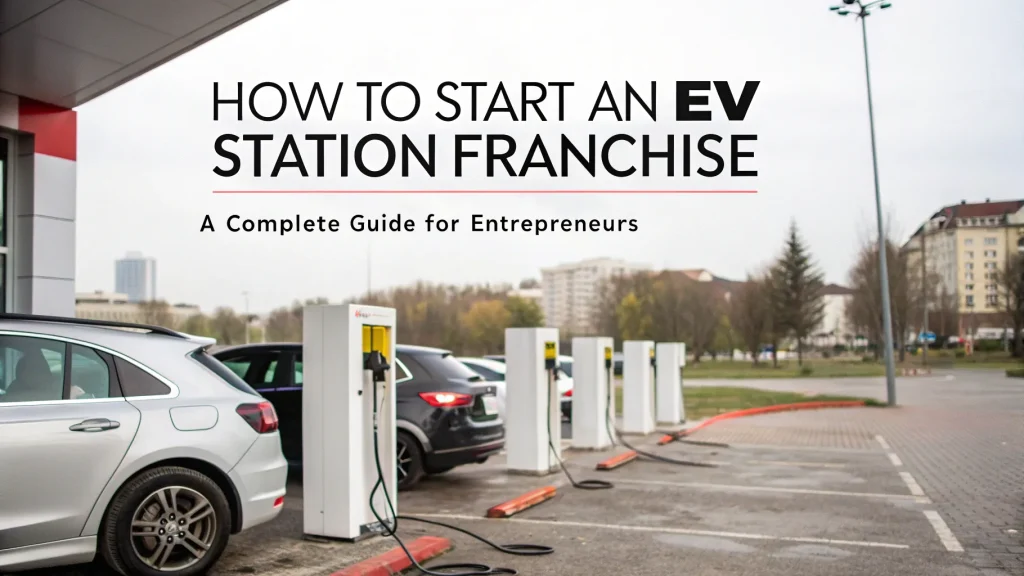Starting your own business today may feel like a leap into the unknown, but it’s actually more accessible and exciting than ever. Whether you’re dreaming of launching a small online shop, offering services, or building the next big tech startup, the tools and resources you need are literally at your fingertips. The world of business is changing rapidly, and there’s never been a better time to dive in. This guide walks you through everything you need to know—from the idea phase to building your brand—to help you turn your passion into a profitable reality. So, buckle up—because your business starts today!
Introduction to Starting a Business
Why Start a Business Today?
So, why today? Why not wait for the “right” moment? Here’s the thing: waiting for the perfect time to start a business often means waiting forever. The truth is, there is no perfect time. But there are perfect opportunities—and those are happening now. With the rise of digital tools, access to online marketplaces, and a growing global audience, getting your product or service in front of people has never been easier.
People are launching businesses from their bedrooms, cafes, and even while commuting. Technology has democratized entrepreneurship. No longer do you need massive capital or a physical office to begin. All you really need is a solid idea, a plan, and the drive to get started. Plus, in uncertain times, creating your own stream of income can provide not just financial stability, but also emotional independence. You control your time, your schedule, and your future.
The business world is now a playground of innovation and creativity. From remote work trends to digital commerce and freelancing platforms, the barriers to entry are lower than ever. In short: there’s no excuse to wait. Your business starts today.
The Modern Entrepreneurial Landscape
Today’s entrepreneurs don’t look like yesterday’s. Forget the suit and tie image. Now, founders wear hoodies, work from co-working spaces, or manage operations via smartphones. Whether you’re launching a drop shipping store, offering coaching services, or creating handmade crafts, there’s a community and platform for you.
Moreover, we’re living in an age of micro-businesses—small operations that are nimble, profitable, and scalable. You can launch a business as a side hustle and grow it into a full-time gig without quitting your day job immediately.
Social media, automation tools, AI, and no-code platforms empower you to do the work of an entire team. Whether you want to build a brand or simply earn extra income, you’ve got the tools. If you’ve got Wi-Fi and a dream, you’ve got everything you need to start your business today.
Finding Your Business Idea
Identifying Gaps in the Market
All successful businesses start with a problem—more specifically, solving one. That’s why identifying gaps in the market is one of the smartest ways to come up with a winning idea. Look around you: What frustrates people? What do they wish existed? What do current products or services lack?
Let’s say your area lacks a late-night healthy food delivery option. That’s a gap. Or maybe local freelancers have no co-working space. That’s a gap. Your job is to find these spaces and fill them in a way that makes life easier, better, or more fun for people.
Start by observing trends in your environment, listening to customer complaints, or reviewing industry forums. Use tools like Google Trends or Reddit to discover what people are searching for. Your goal isn’t to reinvent the wheel—it’s to make a better one.
Remember: The best business ideas aren’t always revolutionary. Sometimes, they’re just better executions of existing ones. It’s not about being first; it’s about being best.
Turning Passion Into Profit
What are you obsessed with? What would you do for free just because you love it? That’s where you’ll find your goldmine. Many successful entrepreneurs turn their hobbies into businesses because passion fuels persistence.
Love photography? Offer freelance photo shoots or sell presets. Obsessed with fitness? Launch an online coaching program or sell your own line of resistance bands. Passion adds authenticity, which is something customers crave in today’s market.
When you love what you do, the long nights, trial and error, and constant problem-solving don’t feel like work—they feel like purpose. That energy is contagious and will help attract customers who believe in your mission.
In short, passion gives your business soul. It’s the difference between another startup and a movement.
Planning Your Business for Success
The Importance of a Business Plan
Here’s a truth bomb: Without a roadmap, you’ll get lost. A business plan doesn’t just impress investors—it keeps you aligned with your own goals. Think of it as the blueprint for your future empire.
Your business plan should outline your mission, target market, value proposition, financial projections, marketing strategy, and operational details. This doesn’t mean writing a 100-page document. Even a 2-page bullet-point plan will keep your ideas focused.
The act of writing it down forces you to think through your assumptions and identify weaknesses before they become expensive problems. Plus, it’s a motivator—each section you complete brings your business one step closer to reality.
Without a plan, you’re reacting. With one, you’re leading.
Understanding Your Target Audience
Knowing your audience is like having a cheat code. You can have the best product in the world, but if you market it to the wrong people, you’ll go broke fast. Start by creating a customer avatar: Who are they? What do they do? What keeps them up at night?
Dig deeper than demographics. Find out what your audience values, where they hang out online, and how they make buying decisions. Use tools like Facebook Audience Insights, surveys, and social media listening to gather real insights.
Once you understand your audience, you’ll speak their language, solve their problems, and earn their trust. And trust is the currency of modern business.
Legal and Financial Foundation
Registering Your Business
Before anything else, make it official. Choose a business structure—sole proprietorship, LLC, or corporation. This decision affects everything from taxes to liability, so it’s worth doing your homework or speaking with a legal pro.
Next, register your business name and get the necessary licenses and permits. This gives you legitimacy in the eyes of customers, banks, and partners. It’s your badge of honor saying: “Yes, I’m serious about this.”
Also, get an Employer Identification Number (EIN) if you plan to hire people or open a business bank account. Think of these steps as the foundation of your entrepreneurial house. Build it strong so you can scale without crumbling later.
Opening a Business Bank Account
Once your business is legally registered, the next step is setting up a business bank account. This might sound like a small thing, but it’s actually a game-changer for how you manage your finances and keep your personal and business expenses separate. It also shows your customers, vendors, and future investors that you’re running a legitimate business.
Why does separation matter? Well, for starters, it makes tax season way less stressful. You won’t have to spend hours sorting through which purchases were for business and which were personal. It also adds credibility—imagine trying to invoice a client and asking them to write the check to your personal name. Doesn’t quite feel professional, does it?
To open an account, you’ll typically need your business license, EIN, and formation documents. Shop around and find a bank that offers the features you need—online banking, integrations with accounting software, or low fees. If you’re a solopreneur, even an online bank can work perfectly. Just remember, keeping your finances clean from the beginning will save you a mountain of headaches down the road.
Budgeting and Startup Costs
Let’s get real for a minute—starting a business costs money. How much? Well, it depends on the kind of business you’re launching. A freelance writer may only need a laptop and a website. But if you’re opening a café, you’ll need equipment, staff, rent, inventory—the list grows quickly.
That’s where budgeting comes in. Start by listing all possible expenses: licenses, tools, marketing, product development, insurance, and even small things like business cards. Then, estimate monthly costs for operations, including internet, subscriptions, or virtual assistants if needed.
Next, identify how you’ll fund your startup. Savings? Friends and family? Crowdfunding? Small business loans? The key is to have a runway—enough money to operate for at least 3 to 6 months without income. Because guess what? Revenue doesn’t always roll in right away.
A clear budget isn’t just about avoiding overspending—it’s about planning for growth. When you know your numbers, you can make smart decisions, avoid unnecessary risks, and stay in control.
Building Your Brand from Day One
Choosing a Name That Sticks
Choosing your business name is a bit like naming a baby—it sticks with you, so don’t rush it. Your name should be memorable, easy to spell, and hint at what you do. It doesn’t have to be overly clever or trendy, but it should spark interest and leave a mark.
A strong name sets the tone for your brand. Ask yourself: Is it future-proof? Will it make sense as you expand? Is the domain name available? You don’t want to fall in love with a name only to find out someone already owns the dot-com or social handles.
Keep it simple and think like your customer. A bakery called “Sweet Tooth Sisters” tells you it’s fun, family-run, and sells treats. Compare that to something vague like “STS Enterprises.” Which one do you remember?
Use online name generators if you’re stuck, and once you settle on a name, check trademarks and register it. Remember, your business name is your first handshake with the world—make it count.
Crafting a Logo and Visual Identity
Once your name is nailed down, it’s time to create a visual identity. This is where your logo, color palette, typography, and style come into play. Think of this as the face of your business—it’s what customers see before they even know what you offer.
A great logo doesn’t have to be complex. In fact, the best ones are often the simplest. Think Nike, Apple, or McDonald’s. You instantly recognize them because they’re clean, scalable, and speak to their brand personality.
If you’re on a tight budget, use tools like Canva or Looka to design your own. Or hire a freelance designer on Fiverr or Upwork for something more customized. Either way, consistency is key. Use the same logo, fonts, and color schemes across your website, packaging, social media, and business cards.
This visual consistency builds trust, which is crucial in your early days. People buy from brands they recognize and remember. So while your logo may not seem like a big deal right now, it becomes part of your brand story—the visual stamp of your growing business.
Setting Up a Digital Presence
Your digital presence is your storefront, office, and first impression all rolled into one. Even if you’re running a brick-and-mortar business, most customers will search for you online first. So having a strong digital footprint is not optional—it’s essential.
Visit the page Select and Choose the Right Business Startup for You for sorting out the questions arising in your mind before starting any business and know which start-up you can plan.
We, at NPCS, endeavor to make business selection a simple and convenient step for any entrepreneur/startup. Our expert team, by capitalizing on its dexterity and decade’s long experience in the field, has created a list of profitable ventures for entrepreneurs who wish to diversify or venture. The list so mentioned is updated regularly to give you a regular dose of new emerging opportunities.





